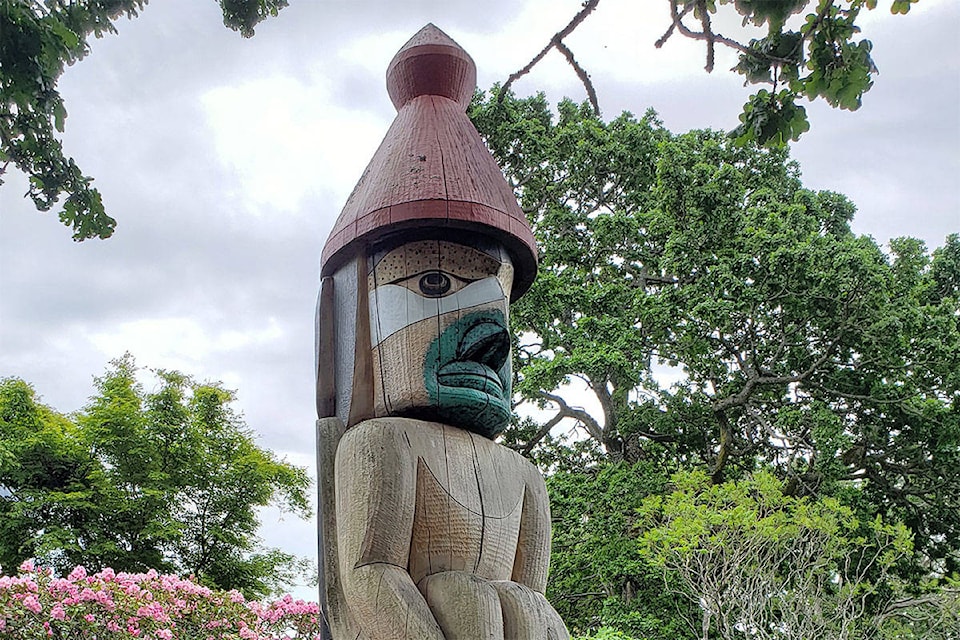His name might not be instantly recognizable but Art Thompson’s work is familiar to many who have visited Camosun College’s Lansdowne campus.
Bukwila is a 15-foot-tall carved welcoming figure in front of Lansdowne’s Wilna Thomas cultural centre dedicated to the Dididaht whaling chief of the same name. Created by late master carver Art Thompson, also known as Tsa Qwa Supp, it is one of his many legacies to Camosun, both seen and unseen, that makes the college what it is today.
Born in 1948, Thompson suffered from tuberculous in childhood. After a long spell in hospital, he was removed from his community and placed in a Nanaimo residential school, where he experienced nine years of abuse. A member of the Ditidaht First Nation of the Nuu Chah Nulth people, he grew up learning the history, art, and culture of his people from his grandfather, and was determined from a young age to carry those legacies forward, despite efforts from others to suppress them.
ALSO READ: Aboriginal gathering space promotes unity at Camosun
In the early 1970s, Thompson studied fine arts at the newly formed Camosun College, in what was then called the West Coast Native Indian Art program. Subsequently, he enrolled at the Emily Carr Institute in Vancouver. As a carver, silversmith, printmaker and painter, he grew into an artist of world renown.
“He always had this strong sense of connection with Camosun – it was the first place that awakened his love of learning and helped him recognize how very smart he was,” said his good friend Janice Simcoe, director of Camosun’s Centre for Indigenous Education and Community Connections.
Many years after surviving his own abuse, he was one of the first witnesses to testify in court against the injustices of the residential school system. “He spoke with that brave, courageous and unbelievably strong voice,” said Simcoe. “He was one of the first ones to open the door to make the whole reconciliation process possible.”
At Camosun, he was a driving force behind the creation of the Wilna Thomas cultural centre, donating many of his own artworks and leading fundraising efforts that resulted in hundreds of thousands of dollars for the project. Later, he helped create the college’s $1,500 annual bursary for Nuu Chah Nulth students, by donating his prints for that purpose.
“Art has had a tremendous impact on Camosun,” said Simcoe. “He taught courage and creativity and generosity, and he taught it all by living those values.”
Today, Thompson’s work is displayed at the Canadian Museum of History, the Royal British Columbia Museum, the Canadian High Commission in Singapore and Stanford University in California, and in private collections around the world.
Thompson died in 2003 at the age of 56. More than 2,500 mourners attended his funeral to pay their respects.
“Camosun carries forward a whole bunch of Art Thompson with us, from the cultural centre to his art pieces displayed all around campus,” said Simcoe. “Probably most important of all, we have his stories of truth that are enabling forms of reconciliation across this country and at the college. I know that’s how I carry Art with me – and I carry him in my work and in my heart.”
Do you have a story tip? Email: vnc.editorial@blackpress.ca.
Follow us on Twitter and Instagram, and like us on Facebook.
